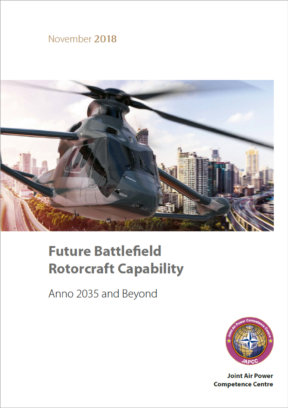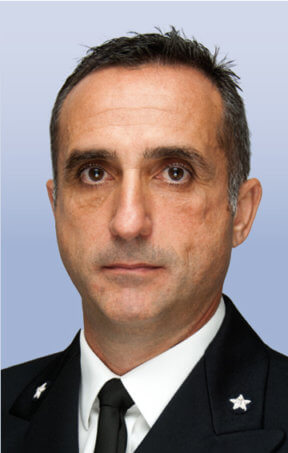Forecasting the future is a daunting task, however, identified fast-moving trends across the diplomatic, information, military, and economic subjects are rapidly transforming the nature of all aspects of society and human life, including the character of warfare. To be prepared for the future to come, national and military organizations are conducting strategic analysis trying to visualize the Future Operational Environment (FOE).
The North Atlantic Treaty Organization (NATO) has recognized that the future of the Armed Forces will be different from today. During the Wales summit in 2014, it already was stated that NATO Joint Air Power capabilities will require longer-term consideration and analyses of the future role of joint air power. In the ‘NATO Strategic Foresight Analysis (SFA) 2017’ Alliance leadership tries to visualize the future security environment, characterized by a rapid rate of change, complexity, uncertainty and interconnectedness. The SFA describes the future NATO expects to unfold to 2035 and beyond, in terms of political, social, technological, economic, and environmental trends.
These trends will also have their effect on subareas like rotary-wing operations. The importance of rotorcraft in both past and present military operations is widely recognized and they have proven to be an important element in the success of operations. Warfare is expected to become more complex in the future, and the ‘Future Battlefield Rotorcraft Capability’ (FBRC) will be an indispensable, and most critical capability requirement for conducting air movement or armed combat missions. In analysis, it is expected possible adversaries will adopt new technologies, new doctrines and revised strategic concepts, modernizing their capabilities in the 2017 – 2035 timeframe, making differences among conventional forces smaller. It is also expected that the timeframe 2035 – 2050 will be marked by significant breakthroughs in technology and convergences regarding capabilities, which will lead to significant changes in the character of warfare.
In the 2030 – 2035 timeframe many of NATO’s helicopters will be due for replacement7 and many allies will refurbish or retire their current helicopter fleets. In fact, the German Ministry of Defense (MOD) is preparing for the creation of a future multirole heavy transport helicopter, as their current CH-53 fleet is expected to reach the end of its service life in the next decade. The United Kingdom MOD is currently assessing their long-term requirements for replacing their medium helicopters from the mid to late 2030s. In this case, a potential result of the UK Army-led combined, Multi-Role Capability Investigation (MRCI), and the Maritime Organic Aviation Capability (MOAC) led by the Navy, is that a single type will replace the current mixed fleet of Merlin, Puma and Wildcat helicopters. Largely all of these helicopter types in use are based on technology and requirements of the 1970s and 80s.
Due to the time needed to develop new types of helicopters, preparing for the new era will be one of the toughest challenges that NATO faces in the next 15 – 20 years and beyond.












